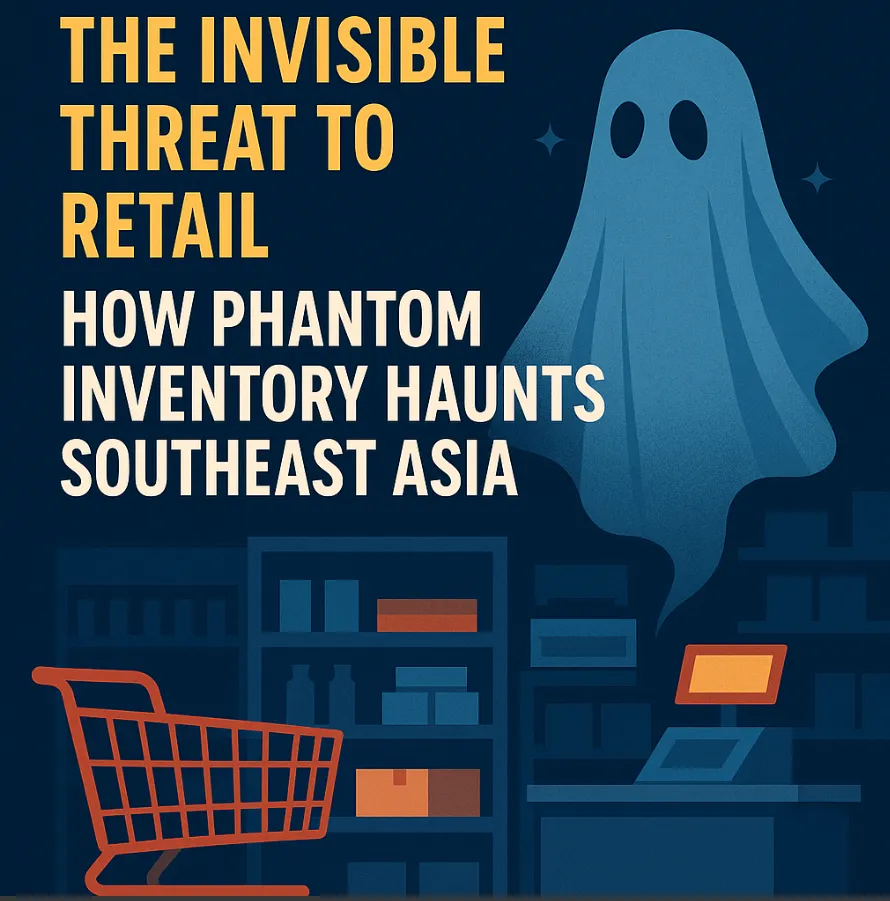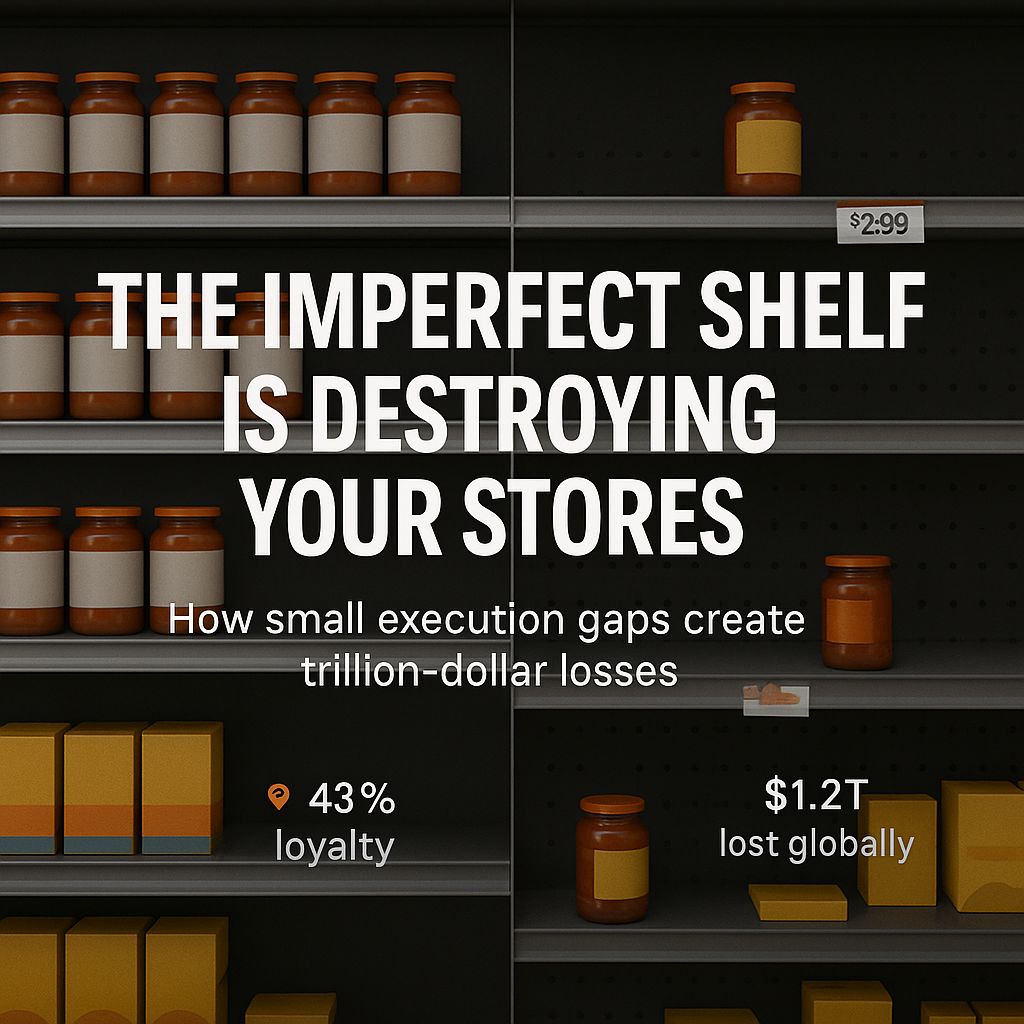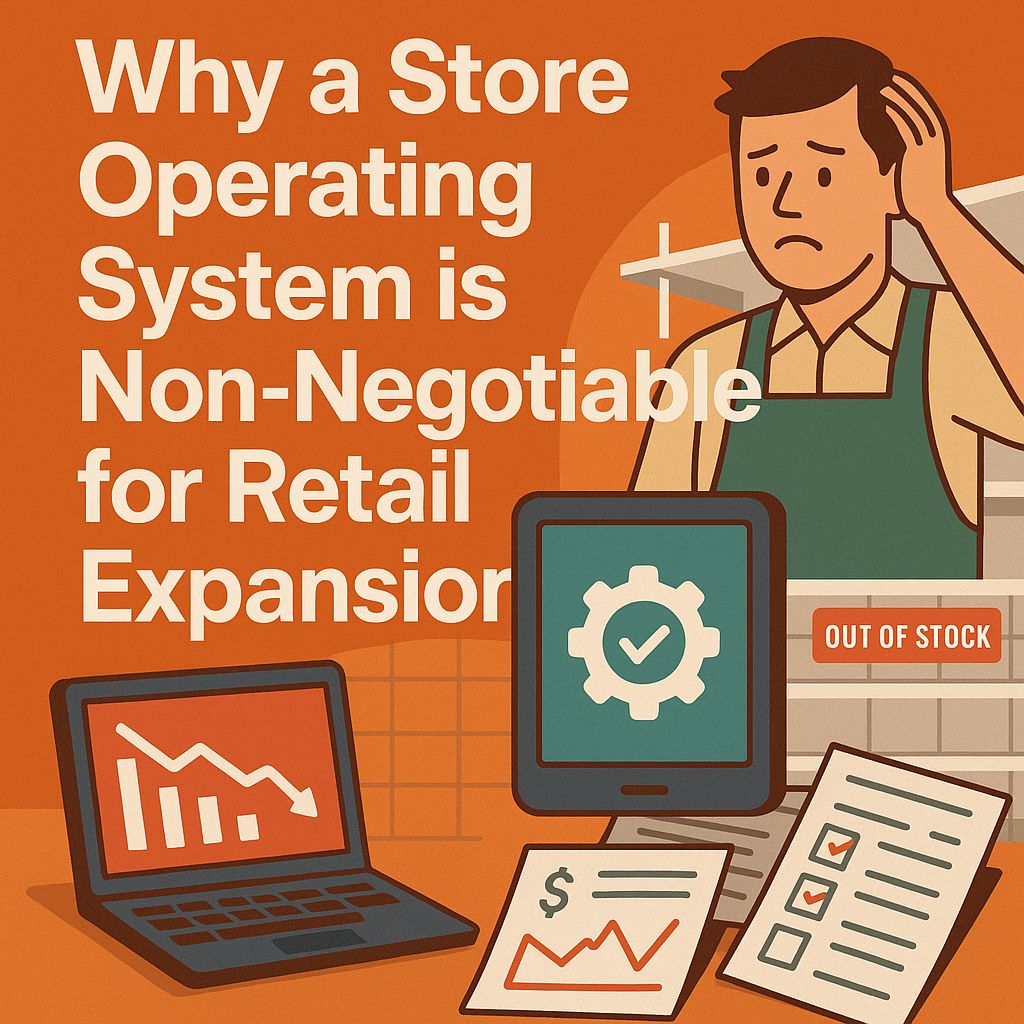Retail
The Invisible Threat to Retail: How Phantom Inventory Haunts Southeast Asia
Discover how phantom inventory silently drains profits in Southeast Asia’s retail sector. Learn the causes, consequences, and strategic solutions to eliminate this invisible threat.

Reading Time
0 Minutes
Table of Contents
Expand
Authored By

Lukasz Piotrowski
CEO & Founder
The retail landscape in Southeast Asia is a vibrant, fast-paced ecosystem. From bustling street-side stalls to massive e-commerce platforms, the competition is fierce.
In this environment, every single item of inventory counts. Yet, a silent, pervasive problem is costing businesses millions in lost sales and operational inefficiency: phantom inventory.
As a retail tech startup, we've seen this issue plague countless businesses in the region. It's time to shine a light on this invisible threat and offer a strategic framework for vanquishing it
A Problem Rooted in Legacy Systems
For many retailers in Southeast Asia, inventory management is still a manual, fragmented process. Data is often entered by hand, leading to human errors. Products are misplaced, damaged, or stolen without being properly logged, creating a ghost-like presence in the system. The high-volume, high-turnover nature of the market, especially in fast-moving consumer goods (FMCG), amplifies this problem.
The consequences are real and costly. When a customer tries to buy an item online that's listed as in stock but is actually gone, the result is a canceled order and a frustrated shopper. In-store, staff waste precious time searching for items that don't exist, leading to lost sales and a poor service reputation. This isn't just an IT glitch; it's a fundamental business problem.
The Core Analysis: Dissecting the Phantom
Phantom inventory isn't a single issue; it's a symptom of deeper systemic failures. Let's break down the primary culprits.
1. Human Error and Misplaced Inventory
In a region where many retailers still rely on manual inventory counts and paper-based systems, human error is the number one cause of discrepancies. A misplaced item in a back room, an incorrect scan at the point of sale (POS), or a mistake during a receiving shipment can all create a "phantom." This is particularly prevalent in multi-channel retailers where stock is moved between the warehouse and the store floor without real-time updates.
Data Point: According to a report by the National Retail Federation, retail shrinkage (which includes causes like theft, damage, and administrative errors) was a global issue, costing the industry over $100 billion. These administrative errors are a direct contributor to phantom inventory.
2. The Multi-Channel Mismatch
The rise of omnichannel retail has created new challenges. A product might be available for online sale based on central warehouse data, but a customer's specific local store is out of stock. Without real-time, unified visibility across all channels, this mismatch is inevitable. This is a critical issue in Southeast Asia where e-commerce is booming and "click-and-collect" or same-day delivery models are becoming standard. When the physical and digital inventory don't sync, the customer experience falls apart.
Data Point: A study on on-shelf availability found that a 1% increase in availability can lead to a 0.5% increase in sales. Phantom inventory directly undermines this availability, making it a direct threat to revenue.
3. The Supply Chain Disconnect
The complex supply chains of Southeast Asia, often involving multiple third-party logistics (3PL) providers, local distributors, and varying levels of technological maturity, make real-time tracking a nightmare. Products can get lost in transit or be incorrectly delivered, yet still be logged in the system as "on the way." This lack of end-to-end visibility means retailers are often in the dark about where their inventory actually is.
Data Point: Research indicates that the primary causes of inventory inaccuracy are receiving errors, misplaced items, and incorrect handling of damaged goods, highlighting the critical need for better data management at every stage of the supply chain.
The Strategic Imperative: A Framework for Vanquishing Phantoms
To overcome phantom inventory, retailers must move from reactive firefighting to a proactive, data-driven strategy. Here’s a framework for success:
- Unified Real-Time Visibility: The first step is to break down data silos. Retailers need a single, unified view of their inventory across all channels—online, in-store, and in-transit. Cloud-based inventory management systems with API integrations can provide this real-time visibility, ensuring the system always reflects the physical reality.
- Automated Anomaly Detection: Instead of relying on manual audits, retailers can leverage AI and machine learning to automatically flag potential phantom inventory. A system can be trained to recognize a "zero sales" pattern on a fast-moving item that the system still shows as having stock. This allows managers to investigate specific products and locations, rather than auditing entire stores.
- Digital-First Processes: Moving away from manual, paper-based processes is non-negotiable. Implementing mobile inventory management apps, handheld scanners for receiving and stocking, and automated POS systems reduces human error significantly. Staff can instantly update inventory levels, and any discrepancies are logged immediately.
- Embrace Predictive Analytics: Beyond just tracking, retailers can use predictive analytics to forecast demand more accurately and identify potential stock issues before they occur. By analyzing historical data and current sales trends, AI can predict which items are at risk of becoming "phantoms" and trigger alerts to preemptively restock or investigate.
Conclusion: The Future is Data-Driven
Phantom inventory is more than an annoyance; it’s a direct hit to a retailer’s bottom line and customer trust. For businesses in Southeast Asia, where competition is fierce and consumer expectations are rising, ignoring this problem is no longer an option. By embracing a strategic, tech-first approach, retailers can move beyond the "ghosts" in their system and build a resilient, profitable, and customer-centric business.
Sources Cited
- Appriss Retail. (2024). The Curious Case of Phantom Inventory.
- DeHoratius, N., & Raman, A. (2008). Inventory Record Inaccuracy: An Empirical Analysis. Management Science, 54(4).
- Kök, A. G., & Shang, K. (2007). Inspection and Replenishment Policies for an Inventory System with Inventory Record Inaccuracy. Manufacturing & Service Operations Management, 9(2).
- NACS. (2022). Convenience Stores Offer Opportunity Despite Labor Challenges.
- Total Retail. (2018). Retail's $1.75 Trillion Inventory Distortion Problem.
About the author: Lukasz Piotrowski is the CEO of OmniShelf, a company dedicated to empowering retailers with innovative solutions for optimized shelf execution. With extensive experience in retail technology, he is passionate about helping businesses overcome operational challenges and drive profitability at the point of sale.
INSIGHTS & UPDATES
Explore More from the OmniShelf Blog
Stay ahead of the curve with deeper insights, product updates, and industry trends shaping the future of retail technology. Discover more stories that matter to your business.














